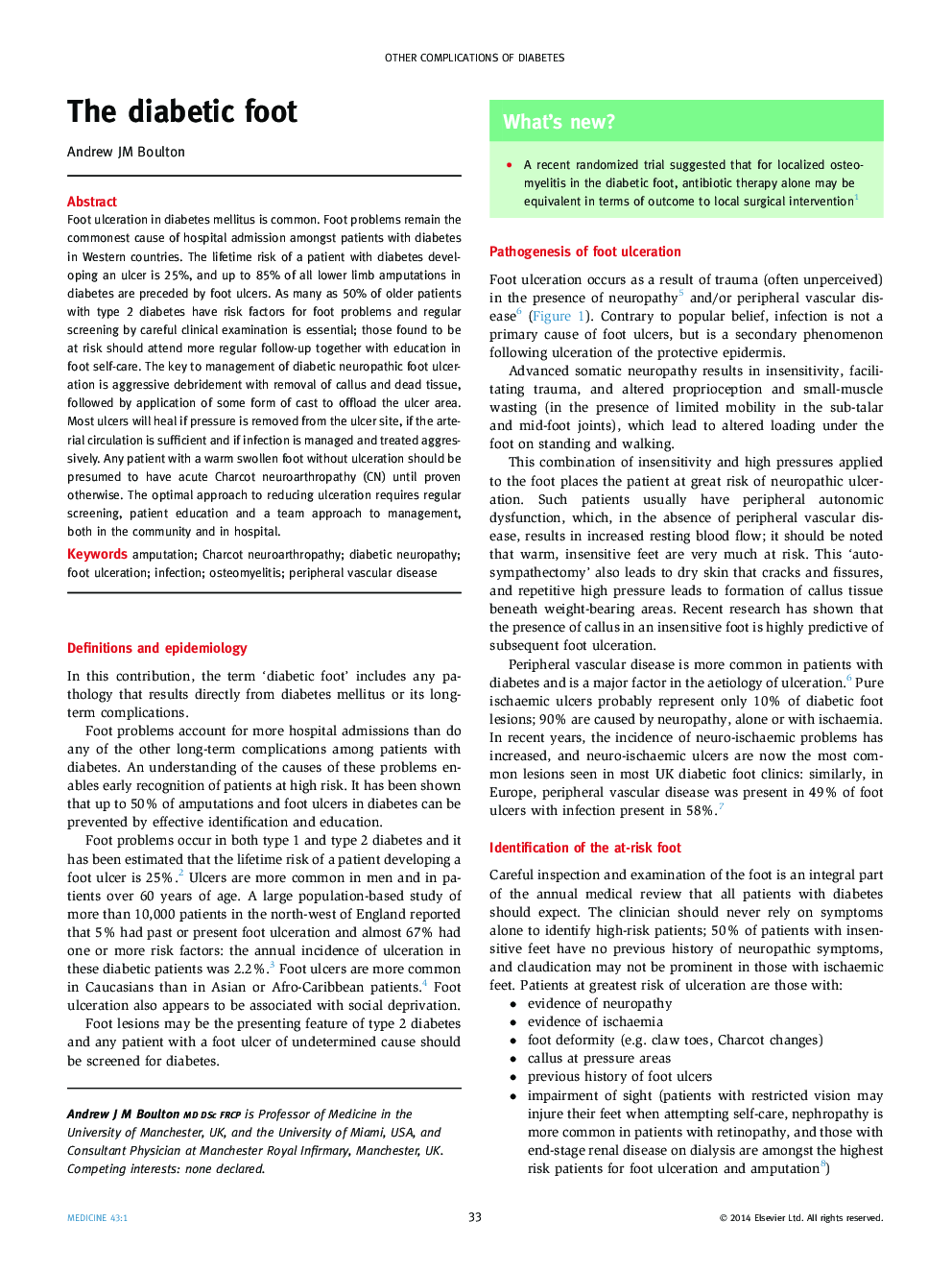| Article ID | Journal | Published Year | Pages | File Type |
|---|---|---|---|---|
| 3803731 | Medicine | 2015 | 5 Pages |
Foot ulceration in diabetes mellitus is common. Foot problems remain the commonest cause of hospital admission amongst patients with diabetes in Western countries. The lifetime risk of a patient with diabetes developing an ulcer is 25%, and up to 85% of all lower limb amputations in diabetes are preceded by foot ulcers. As many as 50% of older patients with type 2 diabetes have risk factors for foot problems and regular screening by careful clinical examination is essential; those found to be at risk should attend more regular follow-up together with education in foot self-care. The key to management of diabetic neuropathic foot ulceration is aggressive debridement with removal of callus and dead tissue, followed by application of some form of cast to offload the ulcer area. Most ulcers will heal if pressure is removed from the ulcer site, if the arterial circulation is sufficient and if infection is managed and treated aggressively. Any patient with a warm swollen foot without ulceration should be presumed to have acute Charcot neuroarthropathy (CN) until proven otherwise. The optimal approach to reducing ulceration requires regular screening, patient education and a team approach to management, both in the community and in hospital.
